The production of the Old and New Testaments
Time Period: 1500 BCE to 1611 CE
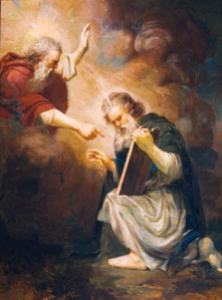 How did we get the King James Version of the Bible?
How did we get the King James Version of the Bible?
Old Testament Quick History
Moses is credited in the Bible with authorship of the first five books. After Moses’ day, scholars surmise that the “Deuteronomistic Historian(s)” completed the works of Deuteronomy, Joshua, Judges, Ruth, and the books of 1 & 2 Samuel and 1 & 2 Kings sometime between 1000 BCE and 609 BCE. It was during the time of King Josiah (640-609 BCE) in Jerusalem that more creation and editing of the Hebrew Bible took place. The destruction of the Jerusalem temple in 586 BCE and the Exile and return to Jerusalem in 539 led to even more changes by scribes. Following the Exile the books of Chronicles were recorded. With the rise of Hellenistic culture in the 3rd century, the Old Testament was translated from Hebrew into Greek around 280 BCE. Today this is known as the Septuagint.
New Testament Quick History
The Jews of Jesus’ day used the Septuagint, or the Greek translation of the Old Testament. After the death of the Apostles and the rise of Christianity in the 4th century CE the books of the New Testament were chosen in 367 by Athanasius. Jerome created the Latin Vulgate around 400 CE. John Wycliffe, the Morningstar of the Reformation, was the first to translate the Bible into English from Jerome’s Latin translation around 1380 CE. Around 1500 CE Erasmus used the Vulgate and other texts to make a new Greek translation. The Greek manuscript put together by Erasmus was what William Tyndale used to give the world another English translation of the Bible around 1520 CE. Tyndale’s translation swept across Europe, as the printing press invented in 1456 enabled him to mass produce copies of this Bible in English. This translation would cost Tyndale his life. Almost 100 years later, King James authorized roughly 50 scholars to render what today is called the King James Version of the Bible in 1611 CE.
The Prophet Moses
Probably one of the first instances of scripture being recorded was when Jehovah wrote his words down in the form of Ten Commandments on the stone tablets delivered to Moses at the top of Mount Sinai. Exodus 31:18 reads, “And he gave unto Moses, when he had made an end of communing with him upon mount Sinai, two tables of testimony, tables of stone, written with the finger of God.” Biblical scholars believe the events surrounding this narrative occurred between 1400 BCE and 1500 BCE. The question regarding how much of this account was written by the hand of Moses himself is a complicated one.[1]Precursor to Paleo-Hebrew Script Discovered in Jerusalem. See: https://www.biblicalarchaeology.org/daily/biblical-artifacts/inscriptions/precursor-to-the-paleo-hebrew-script-discovered-in-jerusalem/ … Continue reading There were probably many oral traditions associated with this narrative, which eventually were written down sometime after the events contained in the books of the Pentateuch.
The Pentateuch
The earliest scripture is generally considered to be the “Pentateuch”, the first five books of the Moses: Genesis, Exodus, Leviticus, Numbers and Deuteronomy. There is debate among scholars relating to the earliest texts in the Bible, with some experts citing evidence to indicate that the Old Testament Book of Job may actually be the oldest book in the Bible.[2]Elon Gilad, Who Really Wrote the Book of Job? See: https://www.haaretz.com/jewish/features/1.741973 Gilad writes, “In fact, archaeologists have uncovered quite a few written tales from the ancient … Continue reading With the rise of the Documentary Hypothesis in modern times, there has been discussion that many of the texts of the Bible were written in the 7th century BCE, surrounding the reign of King Josiah in Judah.[3]The Documentary Hypothesis is the theory that the Pentateuch comes from four documentary sources (thus the name “Documentary Hypothesis”): 1) A Yahwist (J) source, written in the southern kingdom … Continue reading
The Old Testament scriptures that were assembled in the 7th century BCE were written in ancient Hebrew, a language that is different than Modern Hebrew. These writings were passed down from generation to generation for many years on scrolls made of animal skin. We do have an example of a manuscript that was not written on a scroll in the 7th century, as the prophet Nephi left Jerusalem right around 600 BCE with a copy of a text very similar to our Old Testaments, yet containing elements that did not make it into our current Bibles.
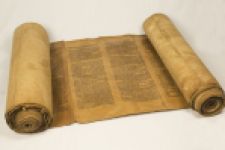 When the entire Pentateuch is present on a scroll, it is called a “Torah.”[4]The word “Torah” is a tricky one, because it can mean different things in different contexts. In its most limited sense, “Torah” refers to the Five Books of Moses: Genesis, Exodus, Leviticus, … Continue reading
When the entire Pentateuch is present on a scroll, it is called a “Torah.”[4]The word “Torah” is a tricky one, because it can mean different things in different contexts. In its most limited sense, “Torah” refers to the Five Books of Moses: Genesis, Exodus, Leviticus, … Continue reading
An entire Torah Scroll, if completely unraveled, would be very long, one author commenting that it would be over 150 feet in length.[5]Willie Stanfield, I am a Witness: Dreams and Visions of Dream, Author House, 2006.
Sometime after the Exile and destruction of the temple in Jerusalem (586 BCE), the books that make up the Old Testament were edited and completed, and continued to be preserved in Hebrew on scrolls. There is evidence that the texts were reworked after the exile, to help the Jews understand the exile in context of the promises in the Old Testament, and to make sense of their situation as they entered into what scholars call the Second Temple Period, when the temple of Jerusalem was rebuilt following the Exile.[6]There are many scholars that address this issue. A few great works to start with are David and Solomon: In Search of the Bible’s Sacred Kings and the Roots of the Western Tradition, by Israel … Continue reading
As we approach the last few centuries before Christ, the Jewish historical books known as the “Apocrypha” were completed, and it was during this time, what historians call the Hellenistic period, when these apocryphal texts found their way into the Septuagint. The term “apocrypha” was coined by Jerome around 400 CE, and refers to the set of ancient Jewish writings written between the time of Malachi and the New Testament period.
The Septuagint
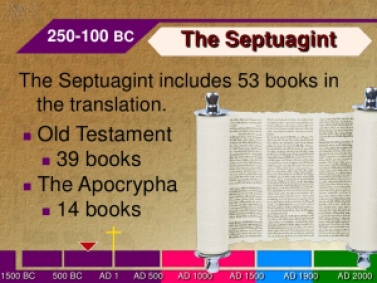 The Septuagint (from the Latin septuaginta, “seventy”), also known as the LXX, is a Koine Greek translation of a Hebraic textual tradition that included certain texts which were later included in the canonical Hebrew Bible and other related texts which were not. As the primary Greek translation of the Old Testament, it is also called the Greek Old Testament. This translation is quoted a number of times in the New Testament, particularly in Paul’s letters,[7]His quotations from Scripture, which are all taken, directly or from memory, from the Greek version, betray no familiarity with the original Hebrew text… Nor is there any indication in Paul’s … Continue readingand also by the Apostolic Fathers and later Greek Church Fathers.
The Septuagint (from the Latin septuaginta, “seventy”), also known as the LXX, is a Koine Greek translation of a Hebraic textual tradition that included certain texts which were later included in the canonical Hebrew Bible and other related texts which were not. As the primary Greek translation of the Old Testament, it is also called the Greek Old Testament. This translation is quoted a number of times in the New Testament, particularly in Paul’s letters,[7]His quotations from Scripture, which are all taken, directly or from memory, from the Greek version, betray no familiarity with the original Hebrew text… Nor is there any indication in Paul’s … Continue readingand also by the Apostolic Fathers and later Greek Church Fathers.
Translated about 285 B.C. for Greek speaking Jews in Alexandria, Egypt, the Septuagint is Greek for seventy because of a tradition that 70 or 72 scholars translated it in 70 days.[8]William M. Schniedewind, How the Bible Became a Book, Cambridge University Press, 2004, p. 178.The Septuagint (abbreviated LXX) became widely accepted by Jews and was the version commonly used by the Apostles. All copies of the LXX are of Christian origin. Christians continued to use the Septuagint; and, it is still the official version of the Orthodox Church in Greece. Though the Septuagint is considered by some to be flawed in many places, it has preserved some passages that have been lost in other manuscripts. The Septuagint also has variant reading from the Masoretic text, for example, in the Septuagint, Goliath is 6’6” instead of over 9 feet tall as listed in the Masoretic Text, the version used in the King James Bible.[9]See Michael Heiser, Clash of the Manuscripts: Goliath and the Hebrew Text of the Old Testament, Bible Study Magazine, October 31, 2014. The scholar Frank More Cross, commenting on the change in … Continue reading
The Masoretic Text
The Masoretic Text is the authoritative Hebrew and Aramaic text of the Old Testament, or Tanakh for Rabbinic Judaism. It was primarily copied, edited and distributed by a group of Jews known as the Masoretes between the 7th and 10th centuries CE. The oldest extant manuscripts date from around the 9th century. Lenet Read stated, “Much of the work of preserving the Hebrew scriptures through the centuries after Christ was accomplished by the Masoretes, traditional Jewish scholars who worked in Palestine and Babylon between the sixth and tenth centuries A.D. The Hebrew manuscript with which they dealt was a solid mass of consonants: there were no written vowels, no word separations, no punctuations. The tedious work of transcribing and the lack of space had led Hebrew scribes to utilize this shorthand system. Regarding the text as sacred, the Masoretes were reluctant to insert vowels, but they developed a system of using dots and dashes which stood for certain vowels. In essence, they were filling out the words without changing the consonantal text.”[10]Lenet Hadley Read, How the Bible Came to Be, part 2, Ensign, February 1982.
The Masoretic text has some flaws with respect to how it treats various aspects of the Messiah as interpreted by Christians today. Some examples include Psalm 39:7, Isaiah 7:14, Deuteronomy 32:43, Isaiah 61:1 and Isaiah 42:4 – all of these texts seem to take away some of the plain and precious teachings about the nature of the Messiah as understood by Christians today (see the diagram at the conclusion of this article).
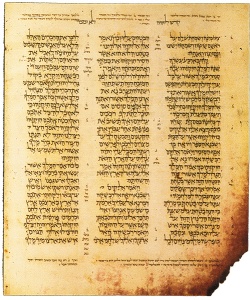
The Aleppo Codex (once the oldest-known complete copy but now missing the Torah) dates from the 10th century. The traditional Hebrew text of the Old Testament was the result of the standardization begun by the Council of Jamnia, held about A.D. 90. The Old Testament of the King James Version uses the Masoretic text, and this matters to Christians because the Masoretic text is part of Christian history in the Protestant break from Roman Catholicism in the 16th century. The Latin Vulgate, put to paper by Jerome around 405 CE, used the Septuagint as its source material for the Old Testament. So why did the Reformers in the 16th century use this Masoretic text if it is not as ancient as the Septuagint? The older a text was, the more authentic it should be, went the thinking, yet here we have Reformers using a text over a thousand years younger than the Septuagint. Why? To me, this seems to be a point where politics and the “messiness” of scripture gets very interesting! The Protestant Reformers were from Western Europe and had been affiliated with the Roman Catholic Church for centuries. Once the Reformation was under way, these reformers did not want to return to the orthodoxy of the Septuagint, but rather adopted the Masoretic Text as their version of the Old Testament.[11]Russell T. Fuller, John Owen and the Traditional Protestant View of the Hebrew Old Testament, The Southern Baptist Theological Seminary. See: … Continue reading
The Septuagint was the Old Testament of the Catholics, they reasoned, and so they moved away from this version in favor of the Masoretic Text.
Understanding that the King James Version of the Bible uses the Masoretic Text of the Old Testament matters to members of the Church of Jesus Christ of Latter-day Saints for a couple of reasons. It is important because the King James Version is the text that Joseph Smith had access to when he translated the Book of Mormon. The Book of Mormon has words and phrases that the King James Version does not have, but that were contained in the Septuagint, something that Joseph Smith did not have access to.[12]The Bible and the Book of Mormon, Fairmormon.org, accessed 12.1.17. See: https://www.fairmormon.org/archive/publications/the-bible-and-the-book-of-mormon This fact would lead one to conclude that the text of the Book of Mormon and the Septuagint have the same source material, at least with respect to the specific verse in question. It could also lead one to conclude that since Joseph Smith did not have access to the Septuagint, that his claim that he was translating an ancient document was legitimate.
What Bible (Old Testament) Did Jesus Use?
It would seem from our reading of the New Testament that Jesus and his apostles studied, quoted, and read most often from the Bible of their day, the Septuagint. Since Matthew wrote primarily to convince the Jews that Jesus of Nazareth was indeed their promised Messiah, it would seem logical that his Gospel would be filled with references to the Hebrew text of the Old Testament. Yet, when Jesus quotes the Old Testament in the book of Matthew, he uses the Hebrew text only 10% of the time, but the Greek LXX translation—90% of the time.[13]Archer and Chirichigno list 340 places where the New Testament cites the Septuagint but only 33 places where it cites from the Masoretic Text rather than the Septuagint. See: G. Archer and G.C. … Continue reading What does this prove? Does it necessarily follow that this is the version of the Old Testament that Jesus used? Perhaps it is not so simple. One author stated, “while the New Testament authors quoted the LXX frequently, it does not necessarily follow that Christ did. We know for certain that Jesus quoted the Hebrew Old Testament at times, since he read from the scrolls in the synagogue. But Jesus could have only quoted from the Hebrew, and the New Testament authors later used the Greek translation to record the fact.”[14]Jason Evert, In which passages does Jesus quote the Septuagint, and where does the New Testament allude to the Septuagint? Accessed 12.1.17. So perhaps the data is inconclusive as to which version Jesus most used, but one thing is certain: the authors of the New Testament texts that we have today used the Septuagint.
New Testament Manuscripts
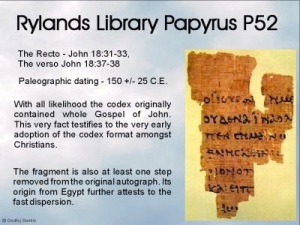
By the end of the First Century CE, the books that make up what Christians call the New Testament had been written down. These books were preserved in Greek on Papyrus, and today we do not have any originals of these works. We only have copies of copies of these texts, the oldest being the Rylands Library Papyrus P52, also known as St. John’s fragment, a very small piece of papyrus (3.5 by 2.5 inches) containing seven lines from the Gospel of John 18:31-33, written in Greek.[15]Kurt Aland and Barbara Aland, The Text of the New Testament: An Introduction to the Critical Editions and to the Theory and Practice of Modern Textual Criticism, Eerdmans, 1995. Collections of these papyrus works were bound and assembled in a configuration similar to modern books, and were called codices. The oldest copies of the New Testament known to exist today are: The Codex Alexandrius and the Codex Sinaiticus in the British Museum Library in London, and the Codex Vaticanus in the Vatican. The Codex Alexandrius dates to around 400-440 CE, while Codex Sinaiticus dates to 330-360 CE. In 367 CE, Athanasius, the Bishop of Alexandria, identified the 27 Books which we recognize today as the canon of New Testament scripture.[16]Carsten Thiede, 367 Athanasius Defines the New Testament, Christianity Today. http://www.christianitytoday.com/history/issues/issue-28/367-athanasius-defines-new-testament.html
The Vulgate
In 382 CE, the meticulous Christian scholar Jerome began translating the New Testament from its original Greek into Latin. After many years of hard work, Jerome completed his translation in 404 or 405 CE.[17]405 CE Jerome Completes the Vulgate, Christianity Today. http://www.christianitytoday.com/history/issues/issue-28/405-jerome-completes-vulgate.html This translation became known as the “Latin Vulgate”, (“Vulgate” meaning “vulgar” or “common”). He put a note next to the Apocrypha Books, stating that he did not know whether or not they were inspired scripture, or just Jewish historical writings which accompanied the Old Testament.[18]Thomas Brown, A Controversy on the Infallibility of the Church of Rome and the Doctrine of Article VI of the Church of England, Forgotten Books, 2017, p. 101.

After Jerome’s translation of the Bible into Latin, it became a challenge to get the Bible into the hands of the people. By 1073, there was a push to make the people the receivers of the scripture rather than readers of it. Lenet Read explains: “During the time of Pope Gregory VII (A.D. 1073–85) a policy against translations took shape. In a struggle with the Greek Church for influence in certain disputed territories, Gregory saw that it was to the Roman church’s political advantage to promote reliance upon Latin in these areas. He also determined that it would be advantageous to create a sharper distinction between laity and clergy. The clergy thus became the teachers of the church, while the laity became receivers only. “From [Pope Gregory’s] time onwards,” asserts one scholar, “orthodox prejudice against lay knowledge of the Biblical text hardened.”[19]Lenet Read, How the Bible Came to Be, Part 5. Ensign, June 1982.
John Wycliffe and William Tyndale

By the year 1382, John Wycliffe had translated the Bible into the language of his people. He was motivated to do so because he knew that scripture makes sense only when you can understand it. Since the people of his time generally did not speak Latin, they had an awful time understanding church services. Scriptures read in Mass were read in Latin, making them of little use for the people. Wycliffe said: “Christ and His Apostles taught the people in the language best known to them. It is certain that the truth of the Christian faith becomes more evident the more faith itself is known. Therefore, the doctrine should not only be in Latin but in the vulgar tongue and, as the faith of the church is contained in the Scriptures, the more these are known in a true sense the better. The laity ought to understand the faith and, as doctrines of our faith are in the Scriptures, believers should have the Scriptures in a language which they fully understand.”[20]William Jeynes, International Handbook of Protestant Education, Springer, 2012, p. 230.
Wycliffe’s work was not received well. Those that were caught with Wycliffe’s Bible were put on trial. Followers were burned at the stake, with copies of these texts hanging around their bodies as they were killed.[21]Margaret Deanesly, The Lollard Bible and other Medieval Biblical Versions, Cambridge: University Press, 1920, p. 365. But his work helped trigger the Reformation, as others would follow in the path he blazed in the end of the 14th century.

William Tyndale’s work on the translation of the Bible became another step towards getting the text of the Bible into the hand of the common man, in his own language. William Tyndale was fluent in seven languages. He drew his translation of the New Testament from the Greek text, rather than from the Latin Vulgate, and did the same with the Old Testament, working with the Hebrew. Tyndale used a Greek text that had been compiled by Erasmus (1466-1536) from several manuscripts that were older than the Vulgate. We enjoy many wonderful phrases and word combinations because of Tyndale’s ability to render a true translation of God’s words like atonement, still small voice, let there be light, and fire in the bones. Of his integrity in translation, Tyndale wrote, “I never altered one syllable of God’s word against my conscience, nor would this day, if all that is in the earth might be given me.”[22]Michael Wilcox, Fire in the Bones: William Tyndale – Marytr, Father of the English Bible. Deseret Book, 2004, p. 140. In his book about Tyndale, Fire in the Bones, Mike Wilcox points out, “Luther would not even go that far, instead tweaking a verse here and there to lean it more favorable to his views.”[23]Ibid, p. 140.
Tyndale’s works were sought for burning by officials in England. In 1535 he was betrayed, put in prison, and on October 6, 1536, was executed in Brussels. He was strangled and burned at the stake. Even though the fire of his execution destroyed Tyndale’s body, the fire of the Reformation was alive and well in the hearts and minds of Christians throughout Europe. William Tyndale’s work in putting the scriptures into the hands of the common man will not be forgotten. In 1611, when scholars under the direction of King James of England rendered their translation of the Bible, (including the 14 apocryphal books) they were dependent upon the work of William Tyndale.[24]Bart Ehrman, The Bart Ehrman Blog, accessed 12.1.17. Bart D. Ehrman is the James A. Gray Distinguished Professor at the University of North Carolina at Chapel Hill. He writes: Many, possibly most, … Continue reading In fact, one author noted that in the King James Version of the Bible, Tyndale’s words accounted for 84 percent of the New Testament and 75 percent of the Old Testament books that he translated![25]Ron Rhodes, The Complete Guide to Bible Translations: How They Were Developed, Understanding Their Differences, Finding the Right One for You. Harvest House Publishers, 2009, p. 67. John Anthony … Continue reading To me, this is significant. William Tyndale is the father of our King James Version of the Bible, based on this assessment, as his work is what the King James translators used in 1611 to complete their work.
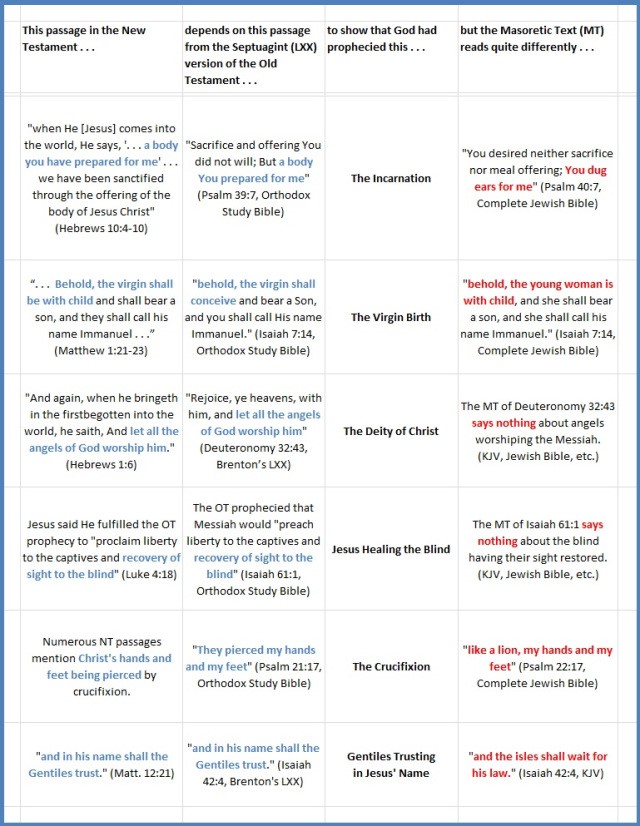
References
| ↑1 | Precursor to Paleo-Hebrew Script Discovered in Jerusalem. See: https://www.biblicalarchaeology.org/daily/biblical-artifacts/inscriptions/precursor-to-the-paleo-hebrew-script-discovered-in-jerusalem/ A tentative conclusion from this article states: “Alan Millard believes that we will likely never know with certainty what the earliest alphabetic text from Jerusalem says. What we can conclude is that the storage jar was inscribed in a place where ordinary workmen made pots, not in the lofty study of a royal scribe. Along with other early inscriptions, including the Gezer Calendar and the Qeiyafa Ostracon, Millard contends that this inscription from Jerusalem may signal widespread – if elementary- literacy during the time of David and Solomon. |
|---|---|
| ↑2 | Elon Gilad, Who Really Wrote the Book of Job? See: https://www.haaretz.com/jewish/features/1.741973 Gilad writes, “In fact, archaeologists have uncovered quite a few written tales from the ancient Near East about gods punishing a completely upright man: they could be equivalent to Job in some ways, or even be the origin of the story. Such stories dating from as early as 4,500 years ago have been found in ancient Egyptian, Akkadian and Sumerian. It is likely that in the very cosmopolitan world of the Persian period – sometime between 550 to 350 BCE – a Jew, living anywhere from Egypt to Palestine and Babylonia, whose mother tongue was Aramaic, – took one of these oral legends and wrote it in Hebrew. Who exactly he was we cannot know, but considering he wrote a book, he was probably a scribe.” |
| ↑3 | The Documentary Hypothesis is the theory that the Pentateuch comes from four documentary sources (thus the name “Documentary Hypothesis”): 1) A Yahwist (J) source, written in the southern kingdom of Judah in early monarchial times, 2) An Elohist source (E), written in the north (Israel) sometime between 1000 BCE and 721 BCE, (these two sources were later combined at some point to form what scholars call JE, 3) The Deuteronomistic History or “D source” document, understood as “The Book of the Law” found in the temple during Josiah’s religious reforms in 640-609 BCE, and 4) The Priestly source (P), the texts in the Pentateuch dealing with the cult of Israel, the temple, who held authority to act in God’s name, how to sacrifice, etc. These four documentary sources were later combined by an editor or redactor, (R) to form the Pentateuch in the form that modern readers now recognize. See: Richard Friedman, Who Wrote the Bible? Harper One, 1987. For a rendering of the sources that a reader can see in one sourcebook, I highly recommend The Bible with Sources Revealed by Richard Friedman. |
| ↑4 | The word “Torah” is a tricky one, because it can mean different things in different contexts. In its most limited sense, “Torah” refers to the Five Books of Moses: Genesis, Exodus, Leviticus, Numbers and Deuteronomy. But the word “torah” can also be used to refer to the entire Jewish bible (the body of scripture known to non-Jews as the Old Testament and to Jews as the Tanakh or Written Torah), or in its broadest sense, to the whole body of Jewish law and teachings. See: http://www.jewfaq.org/torah.htm |
| ↑5 | Willie Stanfield, I am a Witness: Dreams and Visions of Dream, Author House, 2006. |
| ↑6 | There are many scholars that address this issue. A few great works to start with are David and Solomon: In Search of the Bible’s Sacred Kings and the Roots of the Western Tradition, by Israel Finkelstein and Neil Asher Silberman. See also: Who Wrote the Bible? by Richard Friedman, and The Bible Tells Me So by Peter Enns. Authoring the Old Testament, by David Bokovoy, is another great introduction to the ways in which scholars determine the authorship and dates of these texts we call the Hebrew Bible or the Old Testament. |
| ↑7 | His quotations from Scripture, which are all taken, directly or from memory, from the Greek version, betray no familiarity with the original Hebrew text… Nor is there any indication in Paul’s writings or arguments that he had received the rabbinical training ascribed to him by Christian writers.. See: Saul of Tarsus (known as Paul, the Apostle of the Heathen). http://www.jewishencyclopedia.com/articles/11952-paul-of-tarsus |
| ↑8 | William M. Schniedewind, How the Bible Became a Book, Cambridge University Press, 2004, p. 178. |
| ↑9 | See Michael Heiser, Clash of the Manuscripts: Goliath and the Hebrew Text of the Old Testament, Bible Study Magazine, October 31, 2014. The scholar Frank More Cross, commenting on the change in Goliath’s height in the Septuagint said, “He’s barely tall enough to make the all-star game.” See Richard N. Ostling, Dead Sea Scrolls yield major questions in Old Testament understanding. Notre Dame News, November 13, 2000. |
| ↑10 | Lenet Hadley Read, How the Bible Came to Be, part 2, Ensign, February 1982. |
| ↑11 | Russell T. Fuller, John Owen and the Traditional Protestant View of the Hebrew Old Testament, The Southern Baptist Theological Seminary. See: http://equip.sbts.edu/publications/journals/john-owen-traditional-protestant-view-hebrew-old-testament/ |
| ↑12 | The Bible and the Book of Mormon, Fairmormon.org, accessed 12.1.17. See: https://www.fairmormon.org/archive/publications/the-bible-and-the-book-of-mormon |
| ↑13 | Archer and Chirichigno list 340 places where the New Testament cites the Septuagint but only 33 places where it cites from the Masoretic Text rather than the Septuagint. See: G. Archer and G.C. Chirichigno, Old Testament Quotations in the New Testament: A Complete Survey, p. 25-32. |
| ↑14 | Jason Evert, In which passages does Jesus quote the Septuagint, and where does the New Testament allude to the Septuagint? Accessed 12.1.17. |
| ↑15 | Kurt Aland and Barbara Aland, The Text of the New Testament: An Introduction to the Critical Editions and to the Theory and Practice of Modern Textual Criticism, Eerdmans, 1995. |
| ↑16 | Carsten Thiede, 367 Athanasius Defines the New Testament, Christianity Today. http://www.christianitytoday.com/history/issues/issue-28/367-athanasius-defines-new-testament.html |
| ↑17 | 405 CE Jerome Completes the Vulgate, Christianity Today. http://www.christianitytoday.com/history/issues/issue-28/405-jerome-completes-vulgate.html |
| ↑18 | Thomas Brown, A Controversy on the Infallibility of the Church of Rome and the Doctrine of Article VI of the Church of England, Forgotten Books, 2017, p. 101. |
| ↑19 | Lenet Read, How the Bible Came to Be, Part 5. Ensign, June 1982. |
| ↑20 | William Jeynes, International Handbook of Protestant Education, Springer, 2012, p. 230. |
| ↑21 | Margaret Deanesly, The Lollard Bible and other Medieval Biblical Versions, Cambridge: University Press, 1920, p. 365. |
| ↑22 | Michael Wilcox, Fire in the Bones: William Tyndale – Marytr, Father of the English Bible. Deseret Book, 2004, p. 140. |
| ↑23 | Ibid, p. 140. |
| ↑24 | Bart Ehrman, The Bart Ehrman Blog, accessed 12.1.17. Bart D. Ehrman is the James A. Gray Distinguished Professor at the University of North Carolina at Chapel Hill. He writes: Many, possibly most, people don’t realize that the King James Version was not the first translation of the Hebrew Old Testament and the Greek New Testament into English. There were seven major translations published earlier, and all of them to a greater or lesser extent (almost always greater) were dependent on the one(s) that came before them. The first, greatest, and most influential was the translation by William Tyndale. It was also the riskiest. It cost Tyndale his life. |
| ↑25 | Ron Rhodes, The Complete Guide to Bible Translations: How They Were Developed, Understanding Their Differences, Finding the Right One for You. Harvest House Publishers, 2009, p. 67. John Anthony Nordstrom comes to this same conclusion in Stained with Blood: A One-Hundred Year History of the English Bible, WestBowPress, 2014. p. 24. See also: http://www.tyndale.org/tsj03/mansbridge.html |

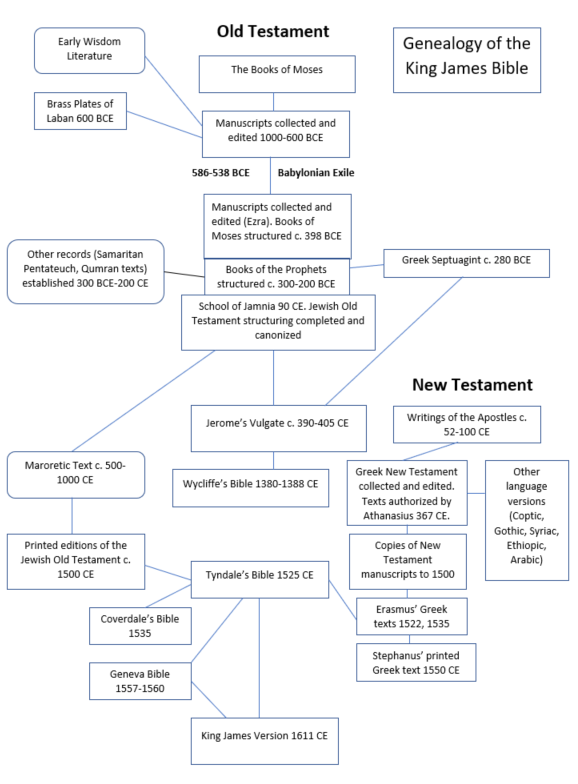
No Comments
Comments are closed.